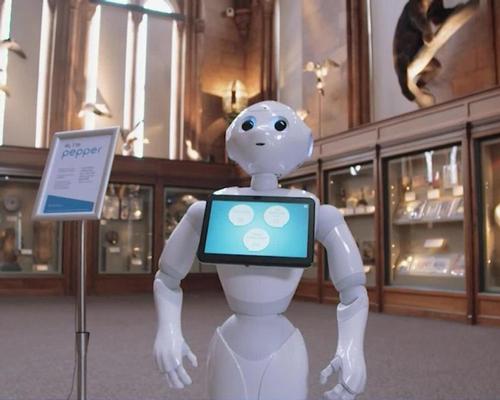20 Jun 2018
MuseumNext Europe 2018: Museums urged to adopt AI as technology comes to the forefront
BY Tom Anstey

For museums to succeed, they must adapt to the ever-expanding presence of artificial intelligence. That was the message delivered to delegates at the MuseumNext European conference, currently taking place in London.
Speaking at the event, Sara Boutall a museum technologist and an account executive at data analytics company Dexibit, asked the question of how AI plays into the museum sector, laying out several roles the technology will, and in some cases already does, play.
"It's really interesting how the conversation around technology has changed," she said.
"When AI entered the conversation, we used to refer to it as almost magic. You put something behind those doors, somebody presses some buttons and suddenly you have something new and amazing. Slowly but surely, however, AI has been sneaking into our everyday lives."
Robotics, machine learning and natural language processing are among the key AI applications for museums. In that context, these technologies already help to forecast visitor numbers, respond to guest queries and better catalogue digital collections. Through the use of big data analytics, the sector is also developing an ‘in the moment’ view of the present.
"We have to get our heads around AI and what it is in a museum context," said Boutall. "We expect Amazon to know what we want to buy or Uber to know where we are. Soon people will expect that kind of intuition in our institutions."
A number of projects have already shown good use of AI in a creative way. San Francisco's Museum of Modern Art recently introduced Send Me – an SMS service which acts as an art discovery tool where users text a number with a keyword or emoji. In response, they will receive a related artwork with a caption.
In Philadelphia, the Barnes Foundation art gallery used machine learning to interpret art, pairing digital work together using 'visual identity' to recognise art style, objects and even images of Jesus, which users could then access online to view the artificially generated art collections.
Artificial concierges are also a new innovation. The Smithsonian Institute, for example, is developing Pepper – a 4-foot-tall interactive humanoid robot. The first museum in the world to experiment with the technology, Pepper can answer visitor's questions, collect information, dance, play games and pose for selfies. The robot can also display images, text and video on a tablet mounted to its chest.
AI can also be used for more practical day-to-day tasks in the museum realm, which Boutall highlighted. She also addressed certain challenges.
"AI doesn't have an embedded sense of ethics," she said. "When Microsoft launched Tay, the AI Twitter bot was shut down within 24 hours due to concerns with its inability to recognise when it was making offensive or racist statements it learned from other users.
"On the other hand, the AI path is leading us down the line to predict very specific behaviours, one example being dynamic pricing. It's one of the ways AI can create these concrete practical changes that will benefit both the museum and its visitors.
"We need to embrace AI. It's a growing part of our lives, we need to teach it to our children. We can use it for the world of museums to make them better, more agile, more open and more flexible."
Close Window